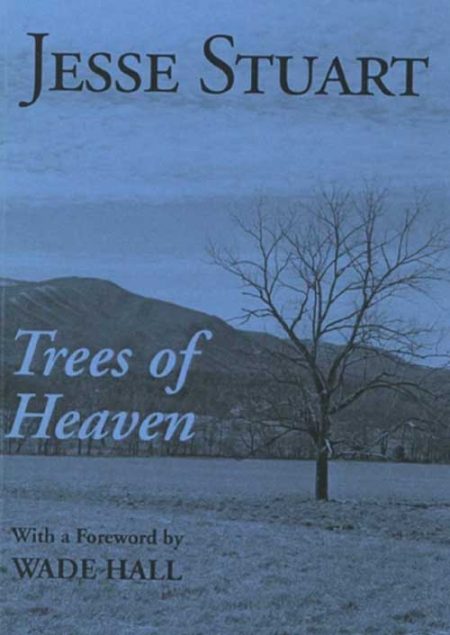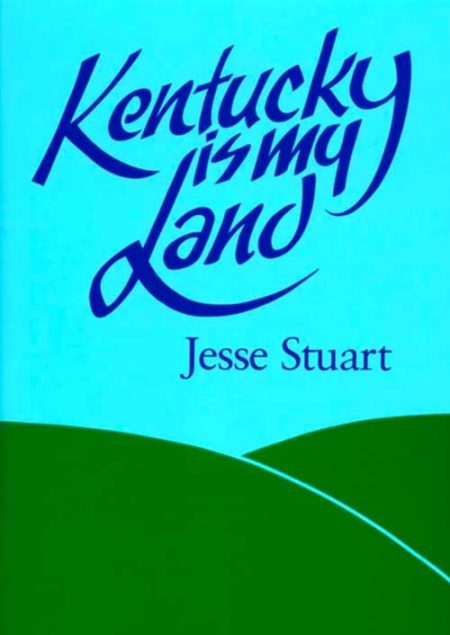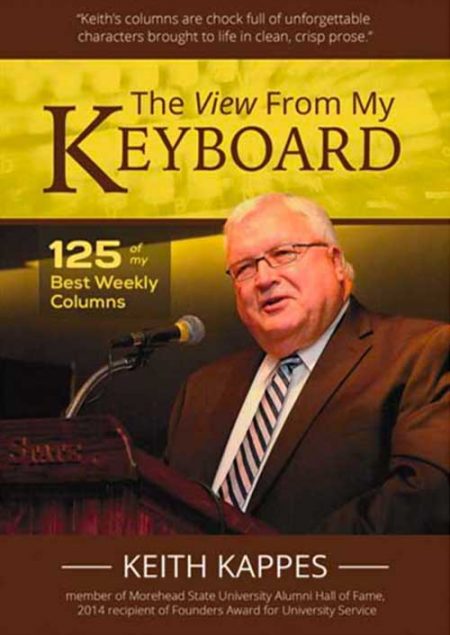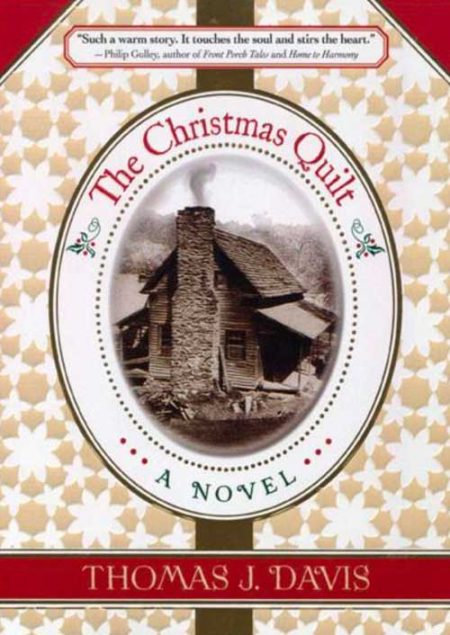-
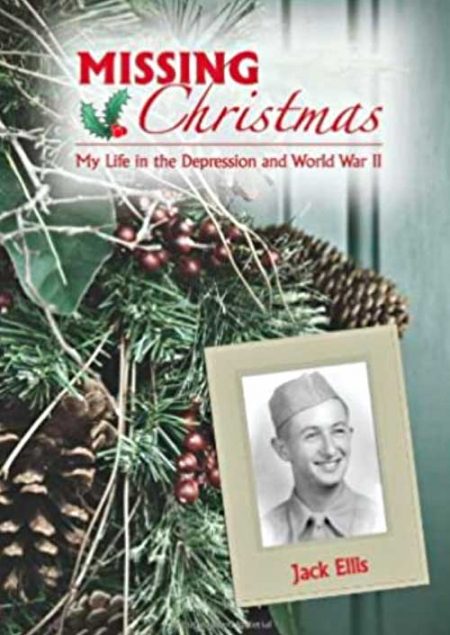 Following World War I, our nation entered a decade of national prosperity. Businesses flourished, and the standard of living rose. Jobs were plentiful and Americans were better fed, clothed, and housed than they had ever been before. However, the prosperity of the roaring twenties did not filter down to the rural poor of Appalachia. When Jack Ellis was born to Lon and Dot Ellis in 1927, the family lived near Morehead, Kentucky in a dilapidated, leaky, rat-infested house with no screens on the windows and one room that had a dirt floor. By the time Jack entered grade school, America was mired in the Great Depression. During the 30s, his father was employed by the Civilian Conservation Corp. for several years, but his mother became discouraged and depressed after losing her teaching position in the Rowan County schools. By Jack D. Ellis
Following World War I, our nation entered a decade of national prosperity. Businesses flourished, and the standard of living rose. Jobs were plentiful and Americans were better fed, clothed, and housed than they had ever been before. However, the prosperity of the roaring twenties did not filter down to the rural poor of Appalachia. When Jack Ellis was born to Lon and Dot Ellis in 1927, the family lived near Morehead, Kentucky in a dilapidated, leaky, rat-infested house with no screens on the windows and one room that had a dirt floor. By the time Jack entered grade school, America was mired in the Great Depression. During the 30s, his father was employed by the Civilian Conservation Corp. for several years, but his mother became discouraged and depressed after losing her teaching position in the Rowan County schools. By Jack D. Ellis -
Out of stock
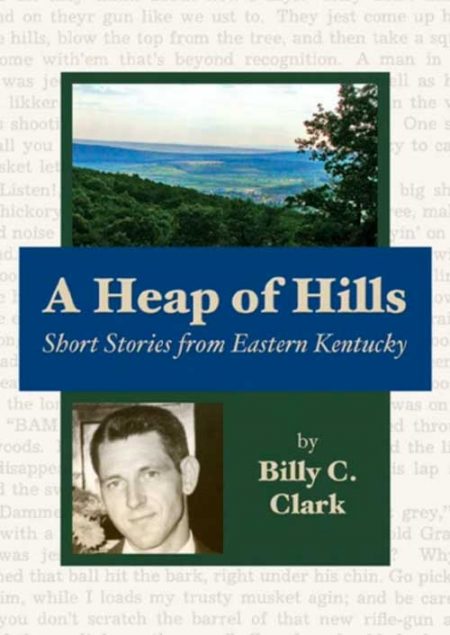 SOFTBACK By Billy C. Clark
SOFTBACK By Billy C. Clark -
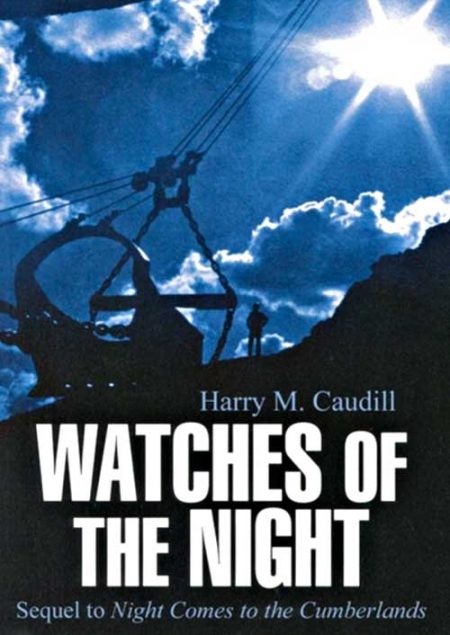 In 1963, Harry M. Caudill published his now classic account of the reckless, deliberate despoliation of the Appalachian Plateau, Night Comes to the Cumberlands. Thirteen years later, in The Watches of the Night, Caudill continued the heartbreaking story of an incredibly rich land inhabited by a grindingly poor people whose problems, despite state and local aid and an unprecedented boom in coal, had worsened: the land was being stripped more rapidly than ever; the people’s traditional relationship with the land was being uprooted, and their old customs eliminated by standardization Both a narrative history and a polemic against greed and waste, The Watches of the Night hammers at “the profligacy growing out of the persistent myth of superabundance.” The author ponders an even darker future if the cycle of boom and bust is not broken. He writes: “Americans have never understood or respected the finely textured, little-hill terrain of the Cumberland Plateau.” Neither the farmers nor the miners who followed the early pioneers saw it as a place cherish. Through decades that have lengthened to nearly two centuries the land has fought back, sometimes with savage floods and always with persistent efforts to reforest. “But now times runs out and our “inexhaustible” resources have turned finite….The Kentucky Cumberlands are many things, but most of all they are a warning.” By Harry M. Caudill
In 1963, Harry M. Caudill published his now classic account of the reckless, deliberate despoliation of the Appalachian Plateau, Night Comes to the Cumberlands. Thirteen years later, in The Watches of the Night, Caudill continued the heartbreaking story of an incredibly rich land inhabited by a grindingly poor people whose problems, despite state and local aid and an unprecedented boom in coal, had worsened: the land was being stripped more rapidly than ever; the people’s traditional relationship with the land was being uprooted, and their old customs eliminated by standardization Both a narrative history and a polemic against greed and waste, The Watches of the Night hammers at “the profligacy growing out of the persistent myth of superabundance.” The author ponders an even darker future if the cycle of boom and bust is not broken. He writes: “Americans have never understood or respected the finely textured, little-hill terrain of the Cumberland Plateau.” Neither the farmers nor the miners who followed the early pioneers saw it as a place cherish. Through decades that have lengthened to nearly two centuries the land has fought back, sometimes with savage floods and always with persistent efforts to reforest. “But now times runs out and our “inexhaustible” resources have turned finite….The Kentucky Cumberlands are many things, but most of all they are a warning.” By Harry M. Caudill -
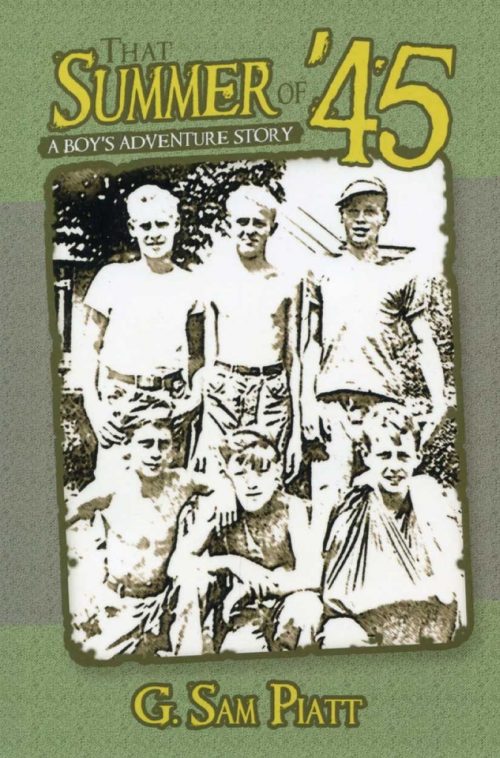 He had reached an age well past the three-score and ten that the Scriptures referred to as the allotted span of man’s life on earth. So it was understandable that he spent more time these days looking back than he did in looking to the future. He wondered if others were affected by nostalgia as strongly as he was of late. For the third time in a week, he had come awake in the middle of the night, staring at the ceiling, tears flowing down the sides of his face and onto the sheet. Oh how he longed to see again the people and the places in that little Ohio River village where he spent his boyhood days. SOFTBACK By Sam Piatt
He had reached an age well past the three-score and ten that the Scriptures referred to as the allotted span of man’s life on earth. So it was understandable that he spent more time these days looking back than he did in looking to the future. He wondered if others were affected by nostalgia as strongly as he was of late. For the third time in a week, he had come awake in the middle of the night, staring at the ceiling, tears flowing down the sides of his face and onto the sheet. Oh how he longed to see again the people and the places in that little Ohio River village where he spent his boyhood days. SOFTBACK By Sam Piatt -
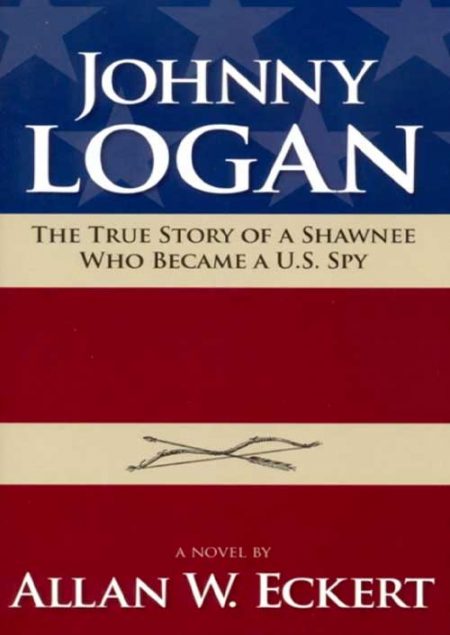 Blue Jacket’s popularity inspired Allan W. Eckert to write Johnny Logan, the true story of a Shawnee who became a U.S. spy, and it was first published in 1983. Logan was one of the greatest Indian friends the white man ever had on the American frontier; and he was the only Native American buried with full United States military honors. By Allan Eckert
Blue Jacket’s popularity inspired Allan W. Eckert to write Johnny Logan, the true story of a Shawnee who became a U.S. spy, and it was first published in 1983. Logan was one of the greatest Indian friends the white man ever had on the American frontier; and he was the only Native American buried with full United States military honors. By Allan Eckert -
Out of stock
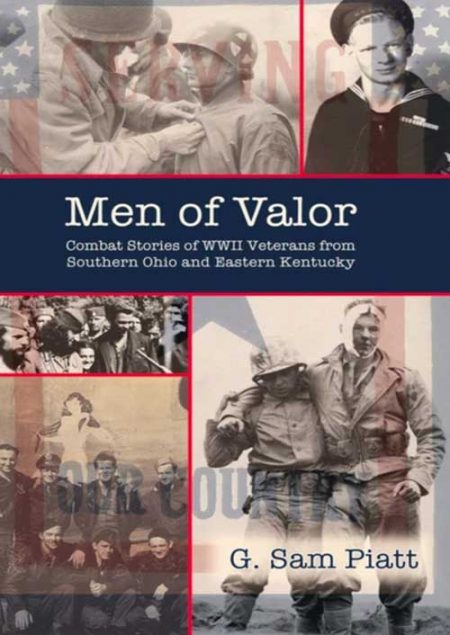 Within the pages of this book, more than sixty-five local combat veterans of World War II share their experiences. There are stories of life in the foxholes, on the beaches, having ships torpedoed out from under them on the deep oceans, and bailing out of burning bombers behind enemy lines. Soldiers and sailors and airmen saw their young friends die beside them but found no time for mourning. They spent sleepless nights with artillery shells exploding all around. They were scared and homesick. Sam Piatt, calling on his thirty years of experience as an award-winning daily newspaper reporter, relates these stories so poignantly that at times it seems the reader can actually hear and feel the battle as they are described. Men of Valor is a book that will keep the reader riveted to the combat stories of World War II veterans from Ohio and Kentucky. SOFTBACK By Sam Piatt
Within the pages of this book, more than sixty-five local combat veterans of World War II share their experiences. There are stories of life in the foxholes, on the beaches, having ships torpedoed out from under them on the deep oceans, and bailing out of burning bombers behind enemy lines. Soldiers and sailors and airmen saw their young friends die beside them but found no time for mourning. They spent sleepless nights with artillery shells exploding all around. They were scared and homesick. Sam Piatt, calling on his thirty years of experience as an award-winning daily newspaper reporter, relates these stories so poignantly that at times it seems the reader can actually hear and feel the battle as they are described. Men of Valor is a book that will keep the reader riveted to the combat stories of World War II veterans from Ohio and Kentucky. SOFTBACK By Sam Piatt -
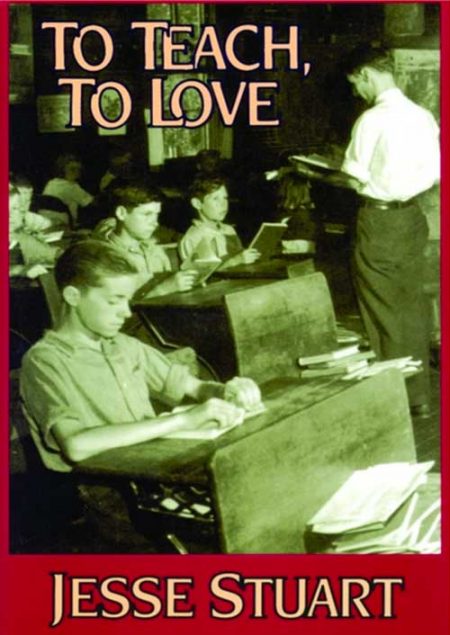 Stuart's autobiographical account of much of his educational career. This great Kentucky novelist, short story writer, poet, and teacher writes about his boyhood, his elementary school and high school experiences, and his days at Lincoln Memorial University. He tells of teaching in a one room rural schoolhouse, his experiences as a county school superintendent, and his stay as a teacher at American University in Cairo, Egypt. He explains what classroom methods worked best, and why, and speculates on what has gone wrong with American schools. By Jesse Stuart
Stuart's autobiographical account of much of his educational career. This great Kentucky novelist, short story writer, poet, and teacher writes about his boyhood, his elementary school and high school experiences, and his days at Lincoln Memorial University. He tells of teaching in a one room rural schoolhouse, his experiences as a county school superintendent, and his stay as a teacher at American University in Cairo, Egypt. He explains what classroom methods worked best, and why, and speculates on what has gone wrong with American schools. By Jesse Stuart -
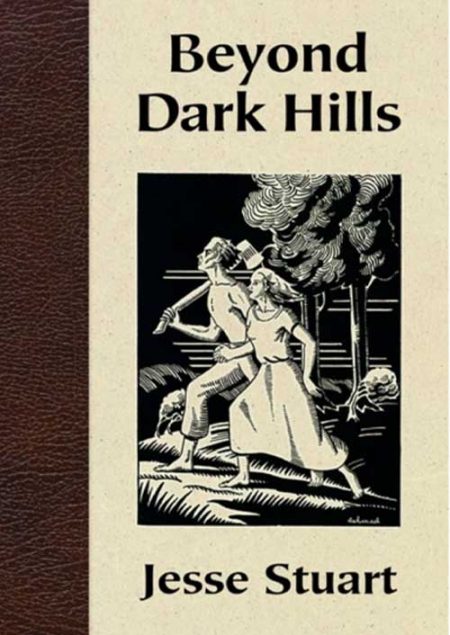 Jesse Stuart began this book in 1932 at Vanderbilt University as a paper for an English professor who asked his seminar students to turn in a maximum of 18 typewritten ages. In the 11 days allotted for the assignment, Stuart crammed 322 pages with the story of his young life. These ageless, universal experiences were told by a vibrant, precocious young man who became one of the most widely read American authors of the 20th century. For the young reader who has yet to experience the transition from childhood to adulthood, this book can be an inspiring guide. For older readers, it may be a beautiful trip down memory lane. HARDBACK By Jesse Stuart
Jesse Stuart began this book in 1932 at Vanderbilt University as a paper for an English professor who asked his seminar students to turn in a maximum of 18 typewritten ages. In the 11 days allotted for the assignment, Stuart crammed 322 pages with the story of his young life. These ageless, universal experiences were told by a vibrant, precocious young man who became one of the most widely read American authors of the 20th century. For the young reader who has yet to experience the transition from childhood to adulthood, this book can be an inspiring guide. For older readers, it may be a beautiful trip down memory lane. HARDBACK By Jesse Stuart -
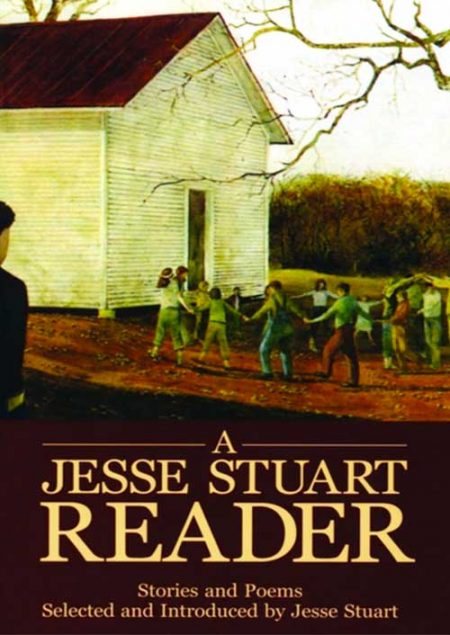 Junior High and High School teachers who wish to introduce their students to Jesse Stuart have a unique teaching tool available in A Jesse Stuart Reader. This 352-page book was designed as a classroom text, and consists of eighteen stories, twenty-six poems, and excerpts from three autobiographical books — God’s Oddling, The Thread That Runs So True, and The Year of My Rebirth. An additional study and teaching aid is Ella DeMer’s 31-page “Commentary and Study Questions” section at the end of the book. Schools ordering 30 or more copies may purchase the book at $9 per copy, a 40% discount. Although most classroom sets are purchased for grades 7-12, this book is effective at the collegiate level, too. Please contact the JSF directly to take advantage of bulk discounts. SOFTBACK By Jesse Stuart
Junior High and High School teachers who wish to introduce their students to Jesse Stuart have a unique teaching tool available in A Jesse Stuart Reader. This 352-page book was designed as a classroom text, and consists of eighteen stories, twenty-six poems, and excerpts from three autobiographical books — God’s Oddling, The Thread That Runs So True, and The Year of My Rebirth. An additional study and teaching aid is Ella DeMer’s 31-page “Commentary and Study Questions” section at the end of the book. Schools ordering 30 or more copies may purchase the book at $9 per copy, a 40% discount. Although most classroom sets are purchased for grades 7-12, this book is effective at the collegiate level, too. Please contact the JSF directly to take advantage of bulk discounts. SOFTBACK By Jesse Stuart -
 When the Japanese attacked Pearl Harbor in December 1941, Cornelia Fort was already in the air. At twenty-two, Fort had escaped Nashville’s debutante scene for a fresh start as a flight instructor in Hawaii. She and her student were in the middle of their lesson when the bombs began to fall, and they barely made it back to ground that morning. Still, when the U.S. Army Air Forces put out a call for women pilots to aid the war effort, Fort was one of the first to respond. She became one of just over 1,100 women from across the nation to make it through the Army’s rigorous selection process and earn her silver wings. SOFTBACK VERSION By Katherine Sharp Landeck
When the Japanese attacked Pearl Harbor in December 1941, Cornelia Fort was already in the air. At twenty-two, Fort had escaped Nashville’s debutante scene for a fresh start as a flight instructor in Hawaii. She and her student were in the middle of their lesson when the bombs began to fall, and they barely made it back to ground that morning. Still, when the U.S. Army Air Forces put out a call for women pilots to aid the war effort, Fort was one of the first to respond. She became one of just over 1,100 women from across the nation to make it through the Army’s rigorous selection process and earn her silver wings. SOFTBACK VERSION By Katherine Sharp Landeck -
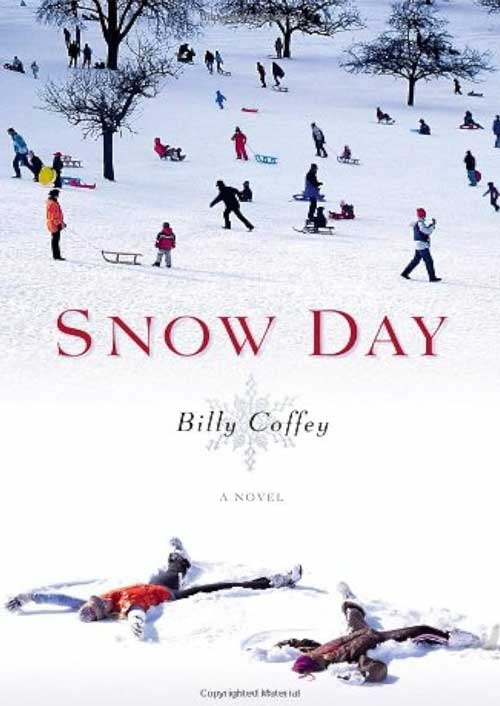 Awakened by radio broadcasts urging the residents of a small Virginia town to take a snow day rather than travel to school and work, Peter Boyd finds himself with both an unexpected day off and an opportunity to find big truths in small moments and surprise encounters. Peter believes he has a good life, with a decent job and a family he loves. But he’s quietly worried he’ll be cut when downsizing takes effect at the factory, his family will lose the home they love, and his faith will crumble along with his bank account. Through the course of one day, Peter finds himself revisiting his past through old friends, finding out there is a Santa Claus - though he drives a truck instead of a sleigh - and rediscovering that whatever comes in life, hope is the only choice that makes sense. Debut novelist Billy Coffey offers a heartwarming and beautiful story about the faithful way God speaks, even when we won’t listen. Like Peter, you’ll reaffirm that faith is worth having and your worst fears are no match for an astounding, loving God. HARDBACK VERSION By Billy Coffey
Awakened by radio broadcasts urging the residents of a small Virginia town to take a snow day rather than travel to school and work, Peter Boyd finds himself with both an unexpected day off and an opportunity to find big truths in small moments and surprise encounters. Peter believes he has a good life, with a decent job and a family he loves. But he’s quietly worried he’ll be cut when downsizing takes effect at the factory, his family will lose the home they love, and his faith will crumble along with his bank account. Through the course of one day, Peter finds himself revisiting his past through old friends, finding out there is a Santa Claus - though he drives a truck instead of a sleigh - and rediscovering that whatever comes in life, hope is the only choice that makes sense. Debut novelist Billy Coffey offers a heartwarming and beautiful story about the faithful way God speaks, even when we won’t listen. Like Peter, you’ll reaffirm that faith is worth having and your worst fears are no match for an astounding, loving God. HARDBACK VERSION By Billy Coffey -
 Sporty Creek is a series of short stories set in the Kentucky hills. Narrated by a young boy (a cousin of the narrator of Still's classic novel River of Earth), the book tells the story of his family during the Great Depression. With work in the coal mines sporadic, they move from place to place, trying to earn a living the best they can. The story is told with gentleness and humor. SOFTBACK VERSION By James Still
Sporty Creek is a series of short stories set in the Kentucky hills. Narrated by a young boy (a cousin of the narrator of Still's classic novel River of Earth), the book tells the story of his family during the Great Depression. With work in the coal mines sporadic, they move from place to place, trying to earn a living the best they can. The story is told with gentleness and humor. SOFTBACK VERSION By James Still -
 “Wit, Wisdom and Other Stuff” is a compilation of 125 commentaries. He is a former reporter for The Associated Press and for newspapers in Ironton, Ohio, Ashland, Ky. and Huntington, W.Va. Keith Kappes is a retired university vice president who returned to community journalism to be publisher of the Morehead News Group for six years. Two years before this book project, he wrote and published “The View from my Keyboard." SOFTBACK VERSION By Keith Kappes
“Wit, Wisdom and Other Stuff” is a compilation of 125 commentaries. He is a former reporter for The Associated Press and for newspapers in Ironton, Ohio, Ashland, Ky. and Huntington, W.Va. Keith Kappes is a retired university vice president who returned to community journalism to be publisher of the Morehead News Group for six years. Two years before this book project, he wrote and published “The View from my Keyboard." SOFTBACK VERSION By Keith Kappes -
Sale!
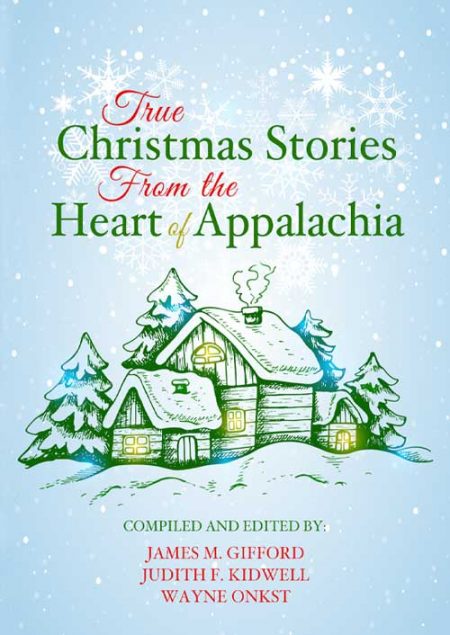 This book captures the spirit of Christmas in 43 true stories by 39 authors. Thirty-five of the stories are set in Kentucky and the others are from neighboring states. All of these powerful and well-written stories emanate from the heart of Appalachia, and many attach themselves to your heart. This is a great Christmas gift book! SOFTBACK VERSION FULL COLOR INTERIOR (You will receive 5 copies of this book for the price of 4)
This book captures the spirit of Christmas in 43 true stories by 39 authors. Thirty-five of the stories are set in Kentucky and the others are from neighboring states. All of these powerful and well-written stories emanate from the heart of Appalachia, and many attach themselves to your heart. This is a great Christmas gift book! SOFTBACK VERSION FULL COLOR INTERIOR (You will receive 5 copies of this book for the price of 4) -
 The Enduring Hills was the first of many novels Janice Holt Giles wrote in her lifetime. Based in part on her own experience with the Kentucky mountain country, this is the story of Hod Pierce, a young man who grows up on Piney Ridge, where generations of Pierces have made a living from stubborn soil. Hod loves his people and the land but longs for wider horizons, for more education, and for the freedom he imagines can be found in the outside world. It takes World War II to carry Hod away from the Ridge and out into the world, and it takes his city-bred wife to make Hod realize that Piney Ridge will always be home. SOFTBACK VERSION By Janice Holt Giles
The Enduring Hills was the first of many novels Janice Holt Giles wrote in her lifetime. Based in part on her own experience with the Kentucky mountain country, this is the story of Hod Pierce, a young man who grows up on Piney Ridge, where generations of Pierces have made a living from stubborn soil. Hod loves his people and the land but longs for wider horizons, for more education, and for the freedom he imagines can be found in the outside world. It takes World War II to carry Hod away from the Ridge and out into the world, and it takes his city-bred wife to make Hod realize that Piney Ridge will always be home. SOFTBACK VERSION By Janice Holt Giles -
 How to Build Your Dream Cabin in the Woods: The Ultimate Guide to Building and Maintaining a Backcountry Getaway This ultimate resource includes photos, blueprints, and diagrams, and covers the steps to constructing the cabin you've always wanted such as:
How to Build Your Dream Cabin in the Woods: The Ultimate Guide to Building and Maintaining a Backcountry Getaway This ultimate resource includes photos, blueprints, and diagrams, and covers the steps to constructing the cabin you've always wanted such as:- Selecting a site
- Gathering construction materials
- Deciding on a design that is right for you
- Managing your property
- Building add-ons, including shooting ranges, an outhouse, or an outside fire ring
- Installing cabin security
- And more!
-
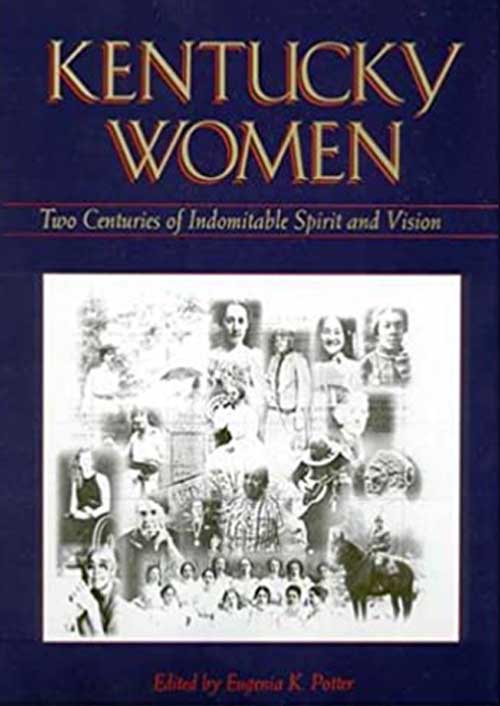 Look through the lens of this kaliedoscope of Kentucky women and prepare to be dazzled! The biographical essays of the 95 women featured in this book are as varied as the loose bits of colored glass in the kaleidoscope, and their stories are just as spellbinding. Thirty-one scholars and history aficionados who generously contributed essays to this book agree that women's contributions are part of this state's history and heritage. With its scrapbook of photographs and biographies, this book introduces only a symbolic few, an inspiring group who represent Kentucky Women. HARDBACK VERSION By Eugenia K. Potter
Look through the lens of this kaliedoscope of Kentucky women and prepare to be dazzled! The biographical essays of the 95 women featured in this book are as varied as the loose bits of colored glass in the kaleidoscope, and their stories are just as spellbinding. Thirty-one scholars and history aficionados who generously contributed essays to this book agree that women's contributions are part of this state's history and heritage. With its scrapbook of photographs and biographies, this book introduces only a symbolic few, an inspiring group who represent Kentucky Women. HARDBACK VERSION By Eugenia K. Potter -
 The Hunters of Kentucky: A Narrative History of America’s First Far West, 1750-1797 covers a wide range of frontier existence, from daily life and survival to wars, exploits, and even flora and fauna. The pioneers and their lives are profiled in biographical sketches, giving a rich sampling of the personalities involved in the United States' westward expansion. Author Ted Franklin Belue's colorful, vivid prose brings these long-forgotten frontiersmen to life. HARDBACK VERSION By Ted Franklin Belue
The Hunters of Kentucky: A Narrative History of America’s First Far West, 1750-1797 covers a wide range of frontier existence, from daily life and survival to wars, exploits, and even flora and fauna. The pioneers and their lives are profiled in biographical sketches, giving a rich sampling of the personalities involved in the United States' westward expansion. Author Ted Franklin Belue's colorful, vivid prose brings these long-forgotten frontiersmen to life. HARDBACK VERSION By Ted Franklin Belue -
Out of stock
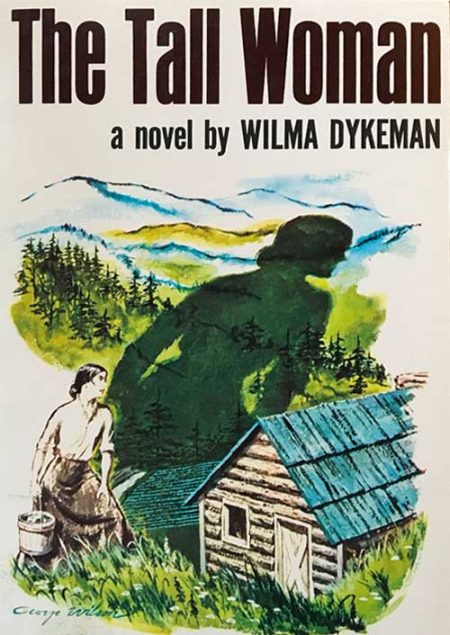 Lydia Moore grew up in the Appalachian region before the Civil War and married Mark McQueen shortly after it began. Her husband went off to fight for the Union while her father and brother fought for the Confederates. While the men were gone, outliers raided Lydia's mother's home, assaulting her and stealing the livestock. SOFTBACK VERSION By Wilma Dykeman
Lydia Moore grew up in the Appalachian region before the Civil War and married Mark McQueen shortly after it began. Her husband went off to fight for the Union while her father and brother fought for the Confederates. While the men were gone, outliers raided Lydia's mother's home, assaulting her and stealing the livestock. SOFTBACK VERSION By Wilma Dykeman -
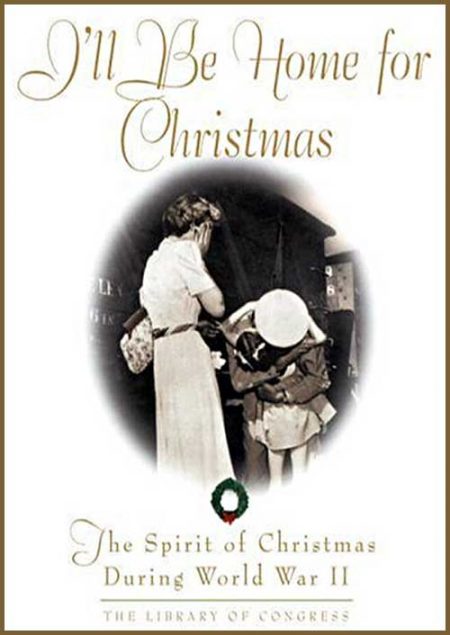 America is ready to remember and honor the men and women who courageously served the nation during World War II. To celebrate those brave souls and their families, and the spirit that carried them through our nation's darkest days, the Library of Congress has created a magnificent gift book. Themed around memories of Christmas during the war, I'll Be Home for Christmas: The Spirit of Christmas During World War II is a unique and handsomely packaged collection of poignant stories, correspondence, more than 100 photographs and illustrations, and diary excerpts from those who went off to war and those who kept the home fires burning. HARDBACK VERSION
America is ready to remember and honor the men and women who courageously served the nation during World War II. To celebrate those brave souls and their families, and the spirit that carried them through our nation's darkest days, the Library of Congress has created a magnificent gift book. Themed around memories of Christmas during the war, I'll Be Home for Christmas: The Spirit of Christmas During World War II is a unique and handsomely packaged collection of poignant stories, correspondence, more than 100 photographs and illustrations, and diary excerpts from those who went off to war and those who kept the home fires burning. HARDBACK VERSION -
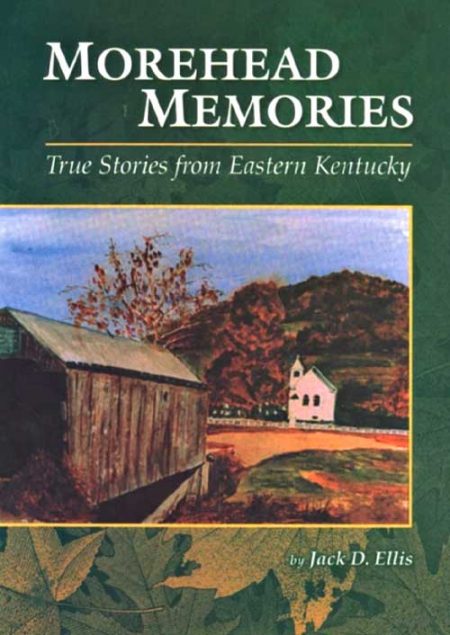 Morehead Memories recalls the struggle of a city and a county to advance from a raw, violent, feud filled region into a modern educational, commercial, cultural and medical center in Eastern Kentucky. The author uses interviews, documented research and personal memories to vividly tell the story of the people, places, institutions and events through which this marvelous transformation was accomplished. HARDBACK By Jack D. Ellis
Morehead Memories recalls the struggle of a city and a county to advance from a raw, violent, feud filled region into a modern educational, commercial, cultural and medical center in Eastern Kentucky. The author uses interviews, documented research and personal memories to vividly tell the story of the people, places, institutions and events through which this marvelous transformation was accomplished. HARDBACK By Jack D. Ellis -
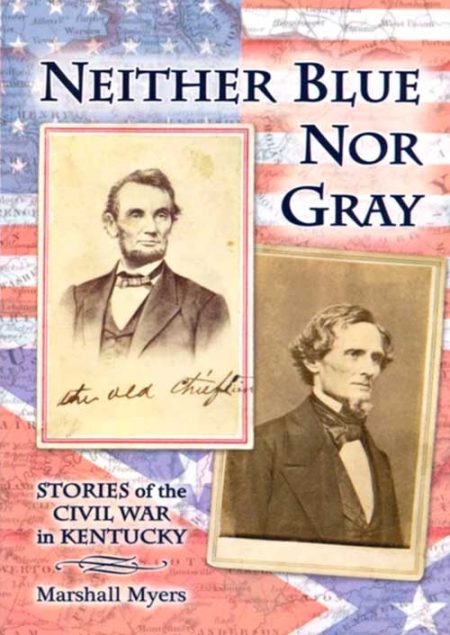 The Civil War affected the daily lives of almost everyone in the Commonwealth of Kentucky, a slave holding state that chose not to secede from the United States. Here are the untold stories of lesser known combatants or the folks back home who suffered in so many ways from the ravages of war. Seventeen chapters range in topics from interviews with former slaves to an examination of Mary Todd Lincoln's family's military involvement in the war. SOFTBACK By Marshall Myers
The Civil War affected the daily lives of almost everyone in the Commonwealth of Kentucky, a slave holding state that chose not to secede from the United States. Here are the untold stories of lesser known combatants or the folks back home who suffered in so many ways from the ravages of war. Seventeen chapters range in topics from interviews with former slaves to an examination of Mary Todd Lincoln's family's military involvement in the war. SOFTBACK By Marshall Myers -
Out of stock
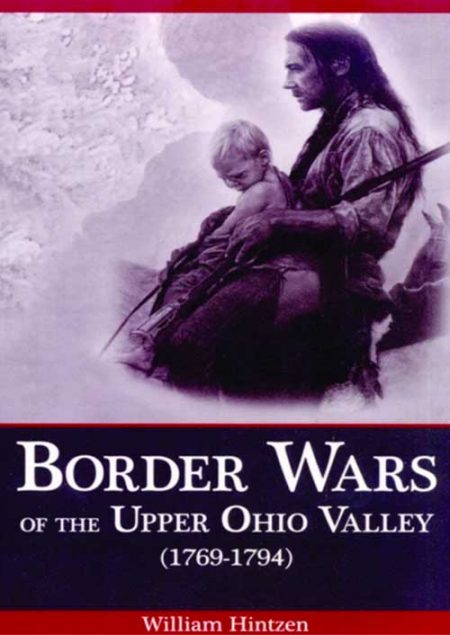 Border Wars of the Upper Ohio Valley is the story of the Trans-Allegheny movement in the quarter-century from 1769-1794. It embraces the area of the present United States from western Pennsylvania to the Mississippi, and from the Great Lakes southward into Tennessee. The story of this westward movement begins with the emigration of the Zane family from the South Branch of the Potomac River, from their home near Moorefield, in present Hardy County, West Virginia, to the mouth of Wheeling Creek in the panhandle of that state, and concludes with Anthony Wayne’s victory over the confederated Indian tribes at Fallen Timbers. William Hintzen’s book brings back the days of Daniel Boone, the Zane family (founders of Wheeling), Simon Kenton, Lewis Wetzel (Death Wind, as the Indians knew him), the 1777 siege of Fort Henry, the Girty brothers, Sam McCo9lloch, Betty Zane’s dash for gunpowder, the remarkable Wetzel family, Sam Brady, George Rogers Clark and Mad Anthony Wayne’s final victory at Fallen Timbers. By William Hintzen
Border Wars of the Upper Ohio Valley is the story of the Trans-Allegheny movement in the quarter-century from 1769-1794. It embraces the area of the present United States from western Pennsylvania to the Mississippi, and from the Great Lakes southward into Tennessee. The story of this westward movement begins with the emigration of the Zane family from the South Branch of the Potomac River, from their home near Moorefield, in present Hardy County, West Virginia, to the mouth of Wheeling Creek in the panhandle of that state, and concludes with Anthony Wayne’s victory over the confederated Indian tribes at Fallen Timbers. William Hintzen’s book brings back the days of Daniel Boone, the Zane family (founders of Wheeling), Simon Kenton, Lewis Wetzel (Death Wind, as the Indians knew him), the 1777 siege of Fort Henry, the Girty brothers, Sam McCo9lloch, Betty Zane’s dash for gunpowder, the remarkable Wetzel family, Sam Brady, George Rogers Clark and Mad Anthony Wayne’s final victory at Fallen Timbers. By William Hintzen -
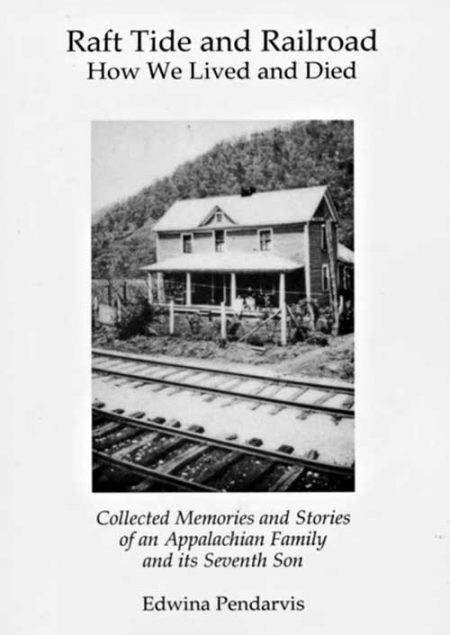 In this family history, “Raft Tide and Railroad: How We Lived and Died — Collected Memories and Stories of an Appalachian Family and Its Seventh Son,” Appalachian author, poet, and editor Dr. Edwina Pendarvis, was guided by sage advice from a grandmother, Jet Johnson, known only to her through family stories and photographs. Not long before Johnson was murdered, she asked one of her sons to note the strength of a bundle of twigs – as opposed to an individual twig – and see it as a metaphor for family strength – a metaphor originated by an earlier Appalachian – the warrior Tecumseh. In “Raft Tide and Railroad,” the author has preserved her family’s history and recognized its strength through accounts that span seven generations of experiences in Virginia, Kentucky, and West Virginia from the early 1800s to the present. SOFTBACK VERSION By Edwina Pendarvis
In this family history, “Raft Tide and Railroad: How We Lived and Died — Collected Memories and Stories of an Appalachian Family and Its Seventh Son,” Appalachian author, poet, and editor Dr. Edwina Pendarvis, was guided by sage advice from a grandmother, Jet Johnson, known only to her through family stories and photographs. Not long before Johnson was murdered, she asked one of her sons to note the strength of a bundle of twigs – as opposed to an individual twig – and see it as a metaphor for family strength – a metaphor originated by an earlier Appalachian – the warrior Tecumseh. In “Raft Tide and Railroad,” the author has preserved her family’s history and recognized its strength through accounts that span seven generations of experiences in Virginia, Kentucky, and West Virginia from the early 1800s to the present. SOFTBACK VERSION By Edwina Pendarvis -
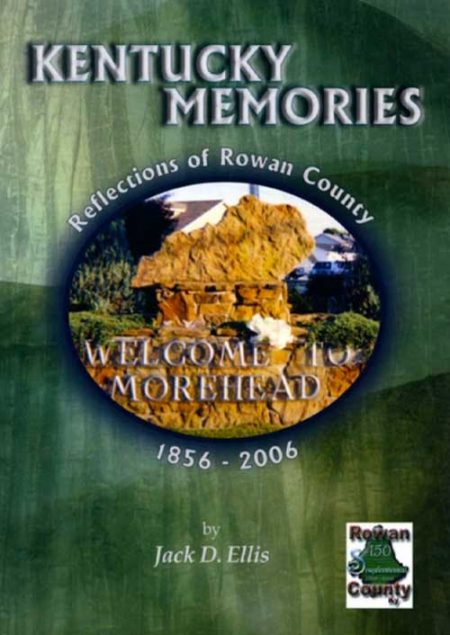 "In Kentucky Memories: Reflections of Rowan County, Jack Ellis has demonstrated an awareness of the important role of local history. During the past century-and-a-half, the human population of this amoeba-like area, carved out of Fleming and Morgan Counties, has matured into an Appalachian folk, cultural, economic, educational, and medical center. Literally scores of people have contributed both positively and negatively to the history of this community, and each of their acts in some form or another should remain as a record of their presence and activities. In the same way, every important human act documenting the past should should be passed on to future generations as a foundation for its presence and actions." — Dr. Thomas D. Clark HARDCOVER By Jack D. Ellis
"In Kentucky Memories: Reflections of Rowan County, Jack Ellis has demonstrated an awareness of the important role of local history. During the past century-and-a-half, the human population of this amoeba-like area, carved out of Fleming and Morgan Counties, has matured into an Appalachian folk, cultural, economic, educational, and medical center. Literally scores of people have contributed both positively and negatively to the history of this community, and each of their acts in some form or another should remain as a record of their presence and activities. In the same way, every important human act documenting the past should should be passed on to future generations as a foundation for its presence and actions." — Dr. Thomas D. Clark HARDCOVER By Jack D. Ellis -
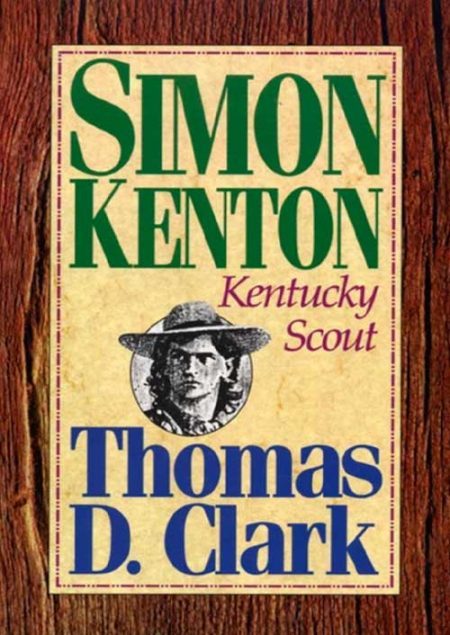 No part of American history is more exciting than the 1770s, when Europeans first settled west of the Appalachian mountains in the land now known as Kentucky. Simon Kenton’s story is synonymous with the story of that era. His life of excitement, adventure, and danger on the frontier made him one of the leading heroes of that time and, eventually a Kentucky legend. By Thomas D. Clark
No part of American history is more exciting than the 1770s, when Europeans first settled west of the Appalachian mountains in the land now known as Kentucky. Simon Kenton’s story is synonymous with the story of that era. His life of excitement, adventure, and danger on the frontier made him one of the leading heroes of that time and, eventually a Kentucky legend. By Thomas D. Clark -
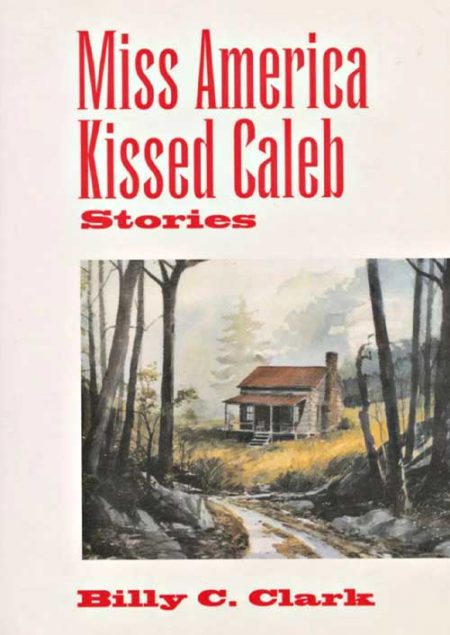 The mountain is a lonely place. Welcome to Sourwood, a small Kentucky town inhabited by men and women unique and yet eerily familiar. Among its joyful and tragic citizens we meet the crafty, spirited Caleb and his curious younger brother; Pearl, a suspected witch, and her sheltered daughter, Thanie; superstitious Eli; and the doomed orphan Girty. In Sourwood, the mountain is both a keeper of secrets and an imposing, isolating presence, shaping the lives of all who live in its shadow. Strong in both the voice and sensibilities of Appalachia, the stories in Miss America Kissed Caleb are at turns heartbreaking and hilarious. In the title story, young Caleb turns over his hard-earned dime to the war effort when he receives a coaxing kiss from Miss America, who sweeps into Sourwood by train, "pretty as a night moth." Caleb and his brother share in the thrills and uncertainties of growing up, making an accidental visit to a brothel in "Fourth of July" and taming a "high society" pooch in "The Jimson Dog." These stories invoke a place and a time that have long passed―a way of living nearly extinct―yet the beauty of the language and the truth revealed in the characters' everyday lives continue to resonate with modern readers. By Billy C. Clark
The mountain is a lonely place. Welcome to Sourwood, a small Kentucky town inhabited by men and women unique and yet eerily familiar. Among its joyful and tragic citizens we meet the crafty, spirited Caleb and his curious younger brother; Pearl, a suspected witch, and her sheltered daughter, Thanie; superstitious Eli; and the doomed orphan Girty. In Sourwood, the mountain is both a keeper of secrets and an imposing, isolating presence, shaping the lives of all who live in its shadow. Strong in both the voice and sensibilities of Appalachia, the stories in Miss America Kissed Caleb are at turns heartbreaking and hilarious. In the title story, young Caleb turns over his hard-earned dime to the war effort when he receives a coaxing kiss from Miss America, who sweeps into Sourwood by train, "pretty as a night moth." Caleb and his brother share in the thrills and uncertainties of growing up, making an accidental visit to a brothel in "Fourth of July" and taming a "high society" pooch in "The Jimson Dog." These stories invoke a place and a time that have long passed―a way of living nearly extinct―yet the beauty of the language and the truth revealed in the characters' everyday lives continue to resonate with modern readers. By Billy C. Clark -
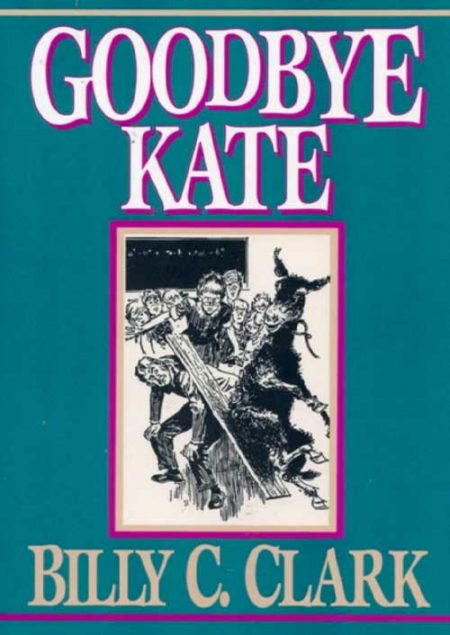 Goodbye Kate, Billy C. Clark’s sixth novel, is based in part on a mule he once owned. In the novel, Kate is found far back in the hills by a lonely country boy named Isaac Warfield. He lives close enough to Tatesburg, the nearest town, to walk to school there, but it’s a small town, and his home is isolated. Isaac has graduated from the little country school he has attended and the other members of his class will be moving on to another school, or to no school at all. He won’t have much contact with his friends anymore, and the nearest neighbor, a money-hungry man named Simm Johns, has no children and is “mean as a striped snake.” Isaac finds Kate when he goes back into the hills to pick some blackberries for his mother. The little mule is apparently as lonely as Isaac is, and she adopts him and follows him home – as far as the pine grove above the house, that is. By Billy C. Clark
Goodbye Kate, Billy C. Clark’s sixth novel, is based in part on a mule he once owned. In the novel, Kate is found far back in the hills by a lonely country boy named Isaac Warfield. He lives close enough to Tatesburg, the nearest town, to walk to school there, but it’s a small town, and his home is isolated. Isaac has graduated from the little country school he has attended and the other members of his class will be moving on to another school, or to no school at all. He won’t have much contact with his friends anymore, and the nearest neighbor, a money-hungry man named Simm Johns, has no children and is “mean as a striped snake.” Isaac finds Kate when he goes back into the hills to pick some blackberries for his mother. The little mule is apparently as lonely as Isaac is, and she adopts him and follows him home – as far as the pine grove above the house, that is. By Billy C. Clark -
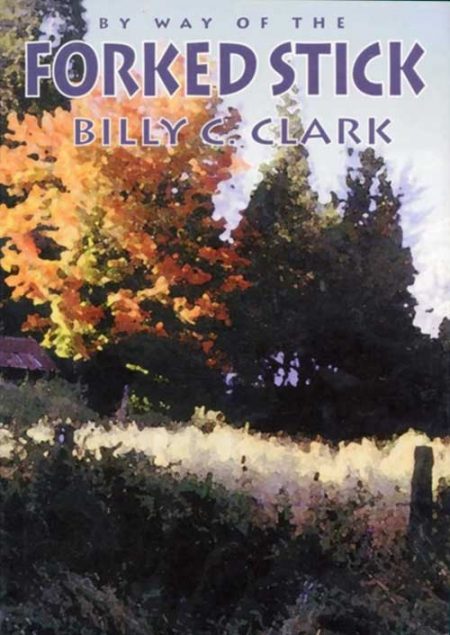 In the little Appalachian town of Sourwood, life at the end of the Great Depression may have been tough, but it was rich beyond compare. Building on a distinguished body of work celebrating and preserving mountain culture, renowned writer Billy C. Clark once again revisits his boyhood during a bygone era. By Way of the Forked Stick offers four fictional stories drawn from the author's childhood experiences of the 1930s—tales that vividly convey the down-home spirit of a lost way of life. By Billy C. Clark
In the little Appalachian town of Sourwood, life at the end of the Great Depression may have been tough, but it was rich beyond compare. Building on a distinguished body of work celebrating and preserving mountain culture, renowned writer Billy C. Clark once again revisits his boyhood during a bygone era. By Way of the Forked Stick offers four fictional stories drawn from the author's childhood experiences of the 1930s—tales that vividly convey the down-home spirit of a lost way of life. By Billy C. Clark -
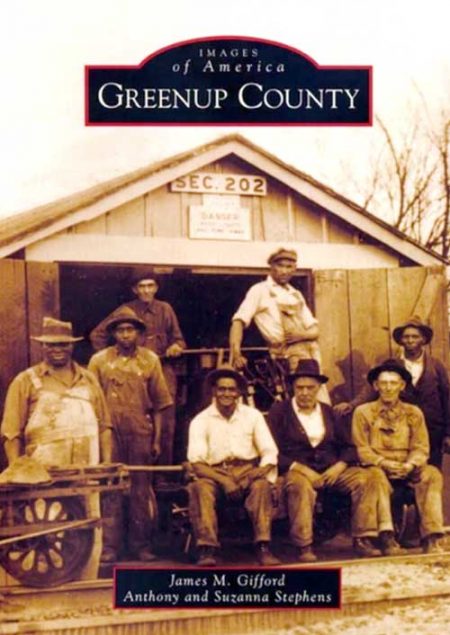 Greenup County, bordering the Ohio River in northeastern Kentucky, is rich in history and culture. Settlers first arrived in the mid-1700s and carved farms from hardwood forests. Lucy Virgin Downs, the first white child born west of the Alleghenies, lived in Greenup County, as did Jesse Boone, brother of Kentucky icon Daniel Boone. The 20th century brought industrialization and economic diversification to the historically agricultural area. Ashland Oil, a Fortune 500 company, maintained corporate headquarters in Greenup County. Two steel mills, a large rail yard, an excellent hospital, and a number of surface mines also provided employment to many people who continued to work their family farms, too. This economic progress was mirrored in every aspect of country life as education, health care, and recreation all improved dramatically. Today Greenup County’s history is appreciated by both longtime residence and cultural tourists. James M. Gifford serves as chief executive and senior editor of the Jesse Stuart Foundation, a regional publishing house. Dr. Gifford’s coauthors, Anthony and Suzanna Stephens, are eastern Kentuckians. The authors gathered photographs from dozens of personal and library collections.SOFTBACK By James M. Gifford, Anthony and Suzanna Stephens
Greenup County, bordering the Ohio River in northeastern Kentucky, is rich in history and culture. Settlers first arrived in the mid-1700s and carved farms from hardwood forests. Lucy Virgin Downs, the first white child born west of the Alleghenies, lived in Greenup County, as did Jesse Boone, brother of Kentucky icon Daniel Boone. The 20th century brought industrialization and economic diversification to the historically agricultural area. Ashland Oil, a Fortune 500 company, maintained corporate headquarters in Greenup County. Two steel mills, a large rail yard, an excellent hospital, and a number of surface mines also provided employment to many people who continued to work their family farms, too. This economic progress was mirrored in every aspect of country life as education, health care, and recreation all improved dramatically. Today Greenup County’s history is appreciated by both longtime residence and cultural tourists. James M. Gifford serves as chief executive and senior editor of the Jesse Stuart Foundation, a regional publishing house. Dr. Gifford’s coauthors, Anthony and Suzanna Stephens, are eastern Kentuckians. The authors gathered photographs from dozens of personal and library collections.SOFTBACK By James M. Gifford, Anthony and Suzanna Stephens


